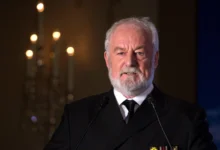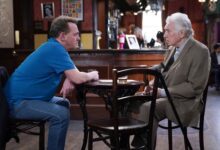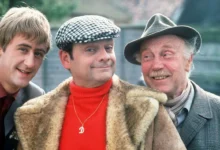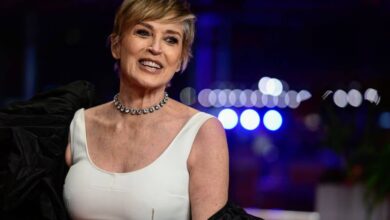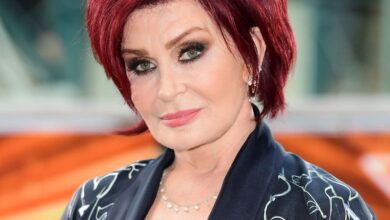The final series of ‘The Crown’ fails to resonate with audiences
As Netflix's grand Royal Family saga, The Crown, approaches its climactic final series, Caryn James writes that what was once a source of delight has, unfortunately, been unable to rectify the significant shortcomings of the previous season.
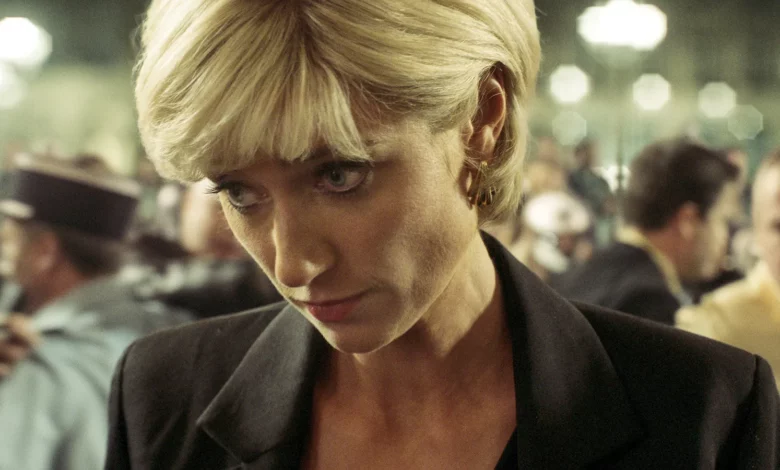

In its concluding season, The Crown plunges swiftly into its pivotal moment. Opening with a serene scene of a man strolling his dog along a narrow street, the sight of the Eiffel Tower signals the impending event. A black car hurtles into a tunnel, trailed by a convoy of vehicles, culminating in a harrowing crash. The focus remains on the dog walker, who urgently reaches for his phone to seek aid. This scene, though familiar, reveals a notable weakness of this final season. Instead of addressing past shortcomings, it accentuates them, notably the mismatched casting of Dominic West as Prince Charles and the exhaustive re-enactments of iconic cultural moments, identifiable worldwide even to those too young to recall the 1990s or Diana’s tragic demise firsthand.
However, the season’s standout moments, sporadically interspersed, reinforce the show’s enduring strength: its imagined scenarios. Commencing with Princess Elizabeth in 1947, the series has artfully interwoven reality with dramatized conjecture regarding the Royal Family’s interactions. The series’ popularity has consistently contrasted with public concerns about these creative liberties. Last season, controversy arose surrounding the portrayal of Charles seeking Prime Minister John Major’s assistance in influencing the Queen towards abdication—a notion Major swiftly dismissed as “nonsense”.
Yet, these intimate fabrications, crafted by the show’s architect and primary writer, Peter Morgan, brim with vibrant dialogue and credibility, setting it apart from clumsy historical renditions and news depictions. Morgan, at times, has humanized the Queen herself, portraying relatable aspects of her everyday challenges: youthful insecurities, whispers of her husband’s infidelity that she likely wishes to ignore, and her strained relationship with a troublesome daughter-in-law.
The first four episodes of this season delve into the events of 1997, beginning two months prior to the tragic Paris car crash and progressing through to Diana’s funeral. The forthcoming six instalments, set to release on the 14th of December, will navigate through to Charles and Camilla’s wedding in 2005. Despite initial concerns, the portrayal is handled with great sensitivity, abstaining from depicting the crash or Diana’s body. While she appears posthumously, engaging in conversations with both Charles and the Queen, it’s portrayed as their imagined interactions, a reflection of their grief rather than a supernatural element, as the creator Peter Morgan elucidated.
However, the series grapples with a casting mismatch. West’s grounded demeanor doesn’t align with a character who, more than ever, appears deeply self-absorbed and privileged. Charles’ entitlement, inherent to his upbringing believing he’s destined to be King, is palpable. Yet, The Crown’s depiction of Charles layers on coarseness and underlying anger, rendering him more relatable to anti-monarchists. His tensions with the Queen, his explosive confrontation with Mark Bolland, and his dissatisfaction with media portrayal all contribute to this portrayal.
West does shine in episode four, capturing Charles’ grief-stricken response to Diana’s death. His visceral reaction upon viewing her body in the Paris morgue is hauntingly portrayed, focusing on his shattered expression rather than the scene itself. However, the character, as envisaged by Morgan, lacks remorse for his decisions regarding his marriage to Diana, and his persistence in pursuing Camilla.
Debicki’s performance remains so wrapped in mimicry she must have a permanent crick in her neck from bending her head to look up from under her eyelashes
Camilla’s presence in the initial episodes of the season is notably subdued, often seen steadfastly by Charles’s side. However, anticipation grows for her portrayal in the upcoming episodes as she emerges unexpectedly as the most intricate persona within the Diana-Charles-Camilla dynamic in season five. Her depiction reveals a depth of genuine love coupled with a resolute ambition to ascend to the position of Queen, employing Bolland’s assistance in the process.
The portrayal of Diana in ‘The Crown’ exposes vulnerability without delving into multifaceted layers. While Debicki’s performance is steeped in mimicry, at times seemingly strained as she perpetually peers from beneath her lashes, it does introduce an inventive and surprising narrative twist this season: a delightful, contented relationship between Diana and Dodi, devoid of grand romantic gestures but rooted in a mutual understanding of the pressures stemming from powerful families. She is depicted as a woman navigating through life’s challenges, earnestly drawing attention to the perils of landmines (albeit briefly depicted), while also indulging in leisurely escapes to St Tropez aboard Dodi’s yacht.
The series occasionally revisits clichéd imagery, such as Diana in a powder blue swimsuit perched on the yacht’s diving board. However, in a more revealing and captivating scene, she shares a light-hearted moment with her therapist over Dodi’s extravagant pursuits, including a poorly rhymed love poem engraved on a silver plaque. Her decision to part ways with Dodi stems from her concerted efforts to overcome what her therapist terms as an ‘addiction to drama.’ Peter Morgan crafts Diana’s final day, amplifying the impending tragedy, featuring a poignant phone conversation with her sons where she reassures them of her decision not to marry Dodi, pledging to return home the following day.
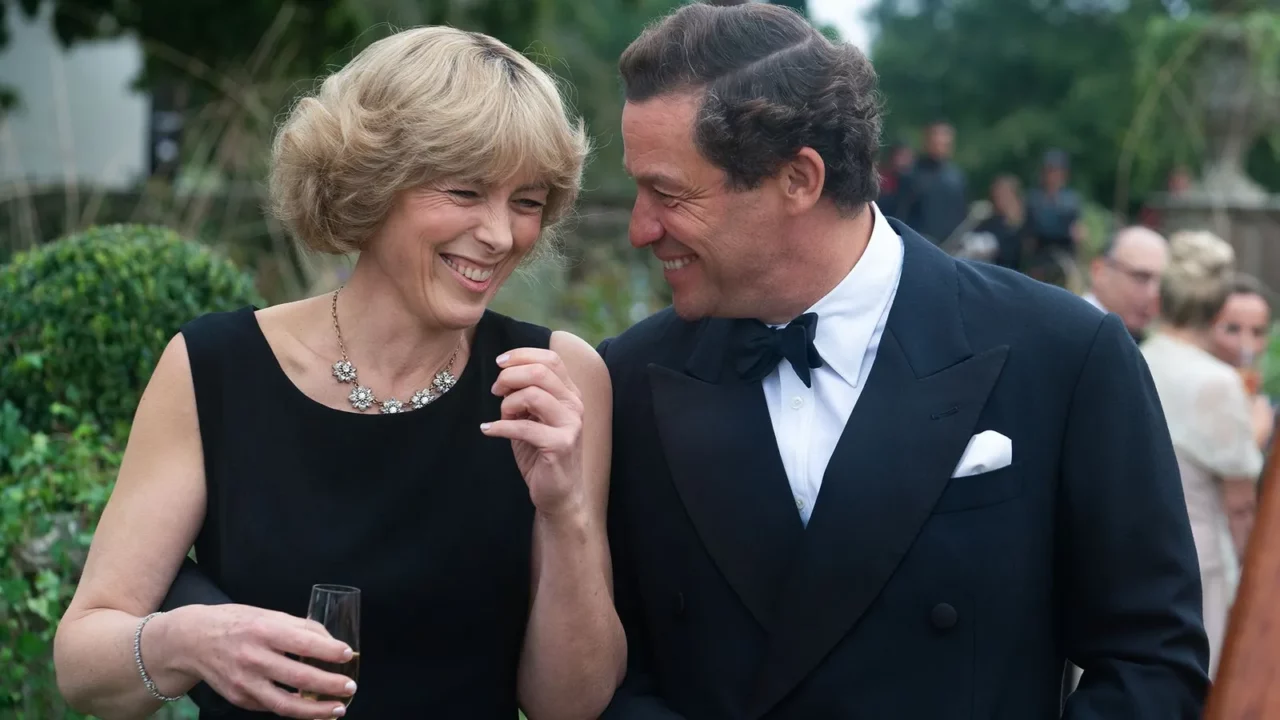

In the latest episodes of ‘The Crown’, a consistent disparity is evident, juxtaposing Diana’s vivid, sunlit days against the foreboding ambiance of Buckingham Palace’s dark wood and shadows. A paparazzo, capturing Diana in his lens, describes his trade as akin to that of hunters or killers—a suggestive, albeit somber, portrayal.
Episode four delves into Peter Morgan’s rendition of his 2006 film, ‘The Queen’, featuring Helen Mirren, examining the aftermath of Diana’s tragic demise. Here, we navigate through two chronological layers: history itself and the cinematic portrayal within the film. Unlike Tony Blair in reality, Charles persuades the Queen to depart Balmoral and publicly grieve in London, appealing to her to be the “mother of the nation”. Imelda Staunton, portraying the Queen, exhibits a formidable resolve, asserting, “I’d prefer not to be instructed on mourning or displaying emotion.” Her performance maintains the beloved essence of the recent memory of the Queen, yet with a convincingly resolute demeanor, reinforced by Prince Philip’s portrayal by Jonathan Pryce. Regrettably, the series omits deeper insight into her thoughts, abruptly shifting course as she relents and heads to London, swayed by an imagined ghostly encounter with Diana. This sudden change mirrors Charles’ sudden recognition of Diana’s significance to the country. These dramatic character turns create a sensation of hurried pacing, almost as if the series is hastening to reach anticipated story milestones, whether essential or not: from William and Harry’s poignant walk behind their mother’s coffin to the Queen’s eventual address to the nation about Diana—a moment laid bare in Staunton’s portrayal, underscoring its scripted nature.
Morgan’s eloquent prose and insightful psychological exploration have captivated audiences over the years. However, in these concluding seasons, the narrative’s predictability often leaves little surprise, allowing viewers to almost anticipate the storyline themselves.
‘The Crown’ season 6, comprising episodes 1-4, premiered on Netflix on 16th November, with the second part slated for release on 14th December.


